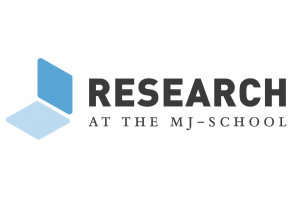Research Publication Roundup: November 2016

A vibrant and collaborative interdisciplinary research culture at the UNC Hussman School of Journalism and Media creates new knowledge, advances scholarship and helps reinvent media. Below is a list of recently published or presented scholarship by Hussman School faculty and students.
This article analyzes the legal obstacles to various strategies for reducing youth initiation of tobacco use. Recently, amendments to federal law have boosted government interest in reducing youth initiation of tobacco use. This push includes regulating the time, place or manner of tobacco product advertising at the point of sale.
Linden, using the outbreak of Zika virus in South America as an example, discusses the role journalists have in reporting emerging infections. He contends that journalists have a different role than clinicians and scientists because rather than communication with medical peers, journalists must translate the information for readers.
This study analyzes unnamed sources in newspaper coverage after an attack on the U.S. Consulate in Benghazi, Libya. Unnamed sources are the most common just after the attack. Though unnamed sources were common, they were less so than in previous studies of routine news coverage. This signals that journalists may be less willing to grant source anonymity in high-stakes stories.
This study integrates two methods, network analysis and fantasy theme analysis, to operationalize social capital. The results show that public relations-facilitated messages cultivate shared meaning and foster social capital.
Miller and Austin explored the role of company-issue congruence in regard to public response to Corporate Social Responsibility (CSR) social media messages. The authors conducted a case study of the Coca-Cola company. The findings indicate that CSR initiatives that are highly congruent with a company’s products or services, but to which corporate products or manufacturing processes contribute negatively, are likely to be criticized more heavily and elicit more public skepticism.
The study tested game-inspired infographics against more traditional displays (eg, text-only, column chart) in ability to convey a behavioral goal and an individual’s behavior relative to the goal. Overall, findings suggest that using game-inspired infographics enhances comprehension and engagement, which may lead to greater behavior change.
This study explores how U.S. Embassies use Twitter. The authors examined the tweet output from four embassies on the State Department official “watch list” and four not on the list. The data reveals inconsistencies among embassies in Twitter use and between Twitter content and the State Department mission, and suggests the possibility of viewing such Twitter activity as public diplomacy.
In this case study, Austin guides students through the problems that may arise in a political campaign. In particular, the case explores campaign misdirection and diversion.
Boynton and Rhew ask readers how they would deal with the death of a student body president. The authors use the case study to examine how to handle stories that involve a lot of emotion and thus require sensitivity.
The authors analyzed the impact of cigarette warnings through a systematic review of longitudinal observational studies examining national implementation of strengthened warnings. Strengthening warnings was associated with increases in knowledge, quitline calls and reductions in smoking behavior.
Over the past decade, private equity funds, hedge funds and investment groups have bought, traded and managed newspapers. As a result, many small and mid-sized communities are in danger of losing their primary source of local news and information. This means news deserts may emerge across regions of the country. This report analyzes trends in newspaper ownership and the long-ranging social, economic and political impact of those trends.